Thaipusam celebrates the day Goddess Parvati bestowed upon her son the “vel” or lance to vanquish the evil demon, Soorapadam. This lance denotes spiritual insight, ability to differentiate right from wrong, righteousness and steadfastness.
However, for many Hindus, Thaipusam has come to mean the birthday of Lord Subramaniam, also known as lord Muruga, the younger son of Lord Shiva.
Hindus celebrate Thaipusam on the tenth month of their calendar.
It coincides with the full moon at the end of January and beginning of February 'Thai' is the Hindu month which falls between January 15 to February 15 and 'Pusam' refers to a star which is at its brightest during the period of this festival.
Celebrated in all parts of the world where there is a concentration of South Indians, the manifestation of the festival is best witnessed in Malaysia at Batu Caves and Penang. The manifestation of the festival is best witnessed at Batu Caves, which is 10km from Kuala Lumpur. The festivities cantered at Batu Caves is an exciting and thrilling spectacle but it also gets very crowded and claustrophobic and you need a lot of patience.
In K. Lumpur, it culminates in a three-day Thaipusam festival which begins from Sri Mahamariaman Temple at Jalan Tun H.S. Lee in Chinatown and ends at Batu Caves. On the eve of the celebration, Lord Muruga’s image is decorated with diamonds, rubies and other jewels. The Idols together with those of his two consorts Valli and Deivayani represent the spiritual and worldly energies (shakti), is placed on a bed of flowers with burning incense on the sides. In the wee hours of the morning, the five-tonne chariot is pulled by two bulls and hundred of devotees on its 15 km journey from Chinatown to Batu Caves. The procession weaves through major streets of the city and takes about 8 hours to reach its destination. A prayer ceremony is held at the foot of the caves and the flag of Lord Muruga is hoisted to announce the commencement of the celebrations.
Leading up to the event, Hindus prepare themselves by fasting, praying and observing austerities. Devotees carry offerings and climb the 272 steps to the main cave to seek forgiveness for past deeds or to thank Lord Muruga for wishes granted. Some devotees carry the Kavadi, a wooden arch with two pots of or honey at its end, decorated with peacock feathers. However bearing a simple pot of milk up to the shrine is all that is required
Kavadi (offering) carriers are devotees who have requested favours,
have had the favour granted or wish to atone for past misdeeds.
Kavadi (offering) carriers are devotees who have requested favours, and have had their favour granted or wish to atone for past misdeeds. Usually, a vow is made to carry the kavadi for one, three, five or even seven years in succession. Common requests are recovery from illness, success in examinations or business or to beget progeny. Only a small number of women devotees pierce their bodies. Most of them carry pots of milk or a pair of coconuts slung across their shoulders instead. Traditional musical instruments are played, and chants of "Vel, Vel" fill the air.
These forms of offerings are overshadowed by more elaborate ones with huge metal frames and bedecked with decorations in the belief that the larger the kavadi the more resolute is one’s devotion. Skewers protruding through cheeks and metal hooks and spikes are also to be seen. This is a quaint evolution of the celebrations not found in Hindu Scriptures and its origins are lost in antiquity.
Hinduism advocates that the body should not be harmed as the body is akin to a temple that the soul resides in. Some devotees however, choose to believe that the only way to salvation is to endure a penance of pain and hardship. However, they are able to tolerate this ordeal of pain as they are in a trance-like state. There is no blood and they prepare themselves for this by undergoing specific rites during the preceding month.
Austerities are followed and the body and soul disciplined to refrain from all forms of worldly activities. The devotees overcomes any form of pain as their minds are attuned to only one thing – spirituality and liberation from worldly desires.
Once the devotees bath in the nearby river, they go into trance and have the kavadi placed on their shoulders or their body pierced, they walk from the river to the temple grounds and climb up the steps to the caves main temple high above. On reaching, they lay down their kavadi and the milk or honey offering is poured on the statue of the deity as an act of thanksgiving, Those with hooks and skewers have a priest chant over them as the metal implements are removed and the wounds treated with hot ash. There is not a drop of blood, no pain and even more amazing, no scarring at all.
In other places in Malaysia, the festival is also celebrated. In George Town, Penang, it centred at the Natukkotai Chettair Temple at Jalan Kebun Bunga. To watch the celebration in Ipoh, go to the Kallumalai Arul Temple at Jalan Raja Musa on the banks of the Sungai Kinta. On Pangkor Island, the Thaipusam procession starts from Pasir Bogak and ends at the Sri Pathirakaliaman Temple on the eastern coast.
The crowds at all venues are huge, especially in Batu Caves. Interested visitors are strongly advised to go there on the eve of the festival and preferably at night to avoid the sweltering day-sun heat and the crowd on the festival day itself.
These forms of offerings are overshadowed by more elaborate ones with huge metal frames and bedecked with decorations in the belief that the larger the kavadi the more resolute is one’s devotion. Skewers protruding through cheeks and metal hooks and spikes are also to be seen. This is a quaint evolution of the celebrations not found in Hindu Scriptures and its origins are lost in antiquity.
Hinduism advocates that the body should not be harmed as the body is akin to a temple that the soul resides in. Some devotees however, choose to believe that the only way to salvation is to endure a penance of pain and hardship. However, they are able to tolerate this ordeal of pain as they are in a trance-like state. There is no blood and they prepare themselves for this by undergoing specific rites during the preceding month.
Austerities are followed and the body and soul disciplined to refrain from all forms of worldly activities. The devotees overcomes any form of pain as their minds are attuned to only one thing – spirituality and liberation from worldly desires.
Once the devotees bath in the nearby river, they go into trance and have the kavadi placed on their shoulders or their body pierced, they walk from the river to the temple grounds and climb up the steps to the caves main temple high above. On reaching, they lay down their kavadi and the milk or honey offering is poured on the statue of the deity as an act of thanksgiving, Those with hooks and skewers have a priest chant over them as the metal implements are removed and the wounds treated with hot ash. There is not a drop of blood, no pain and even more amazing, no scarring at all.
In other places in Malaysia, the festival is also celebrated. In George Town, Penang, it centred at the Natukkotai Chettair Temple at Jalan Kebun Bunga. To watch the celebration in Ipoh, go to the Kallumalai Arul Temple at Jalan Raja Musa on the banks of the Sungai Kinta. On Pangkor Island, the Thaipusam procession starts from Pasir Bogak and ends at the Sri Pathirakaliaman Temple on the eastern coast.
The crowds at all venues are huge, especially in Batu Caves. Interested visitors are strongly advised to go there on the eve of the festival and preferably at night to avoid the sweltering day-sun heat and the crowd on the festival day itself.


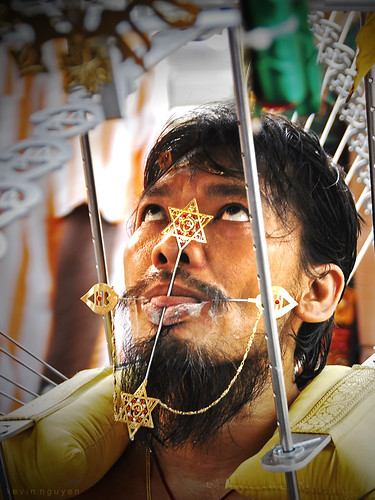
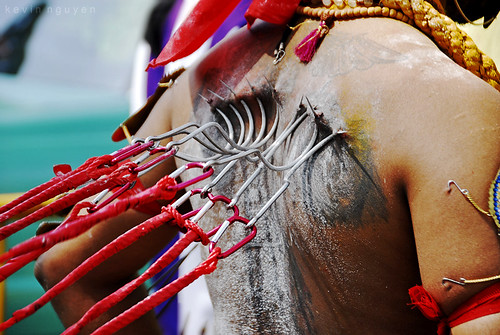
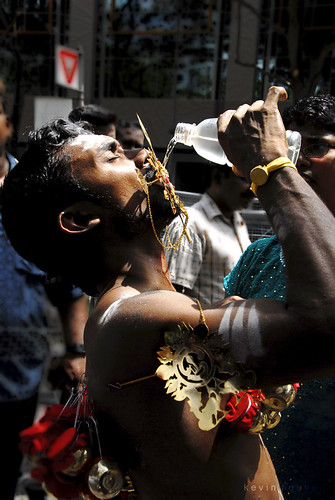
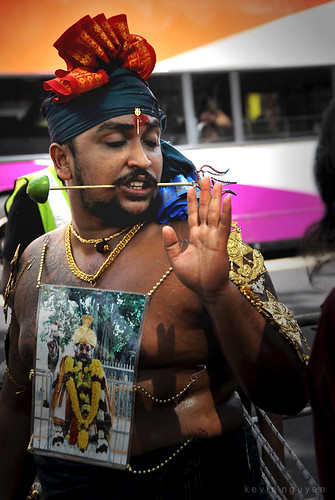
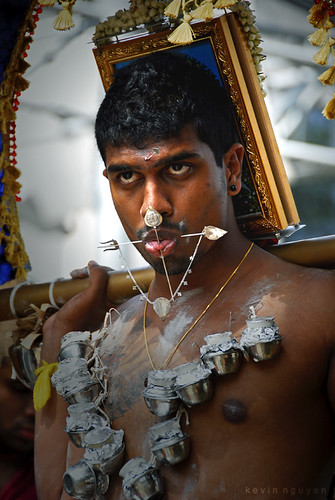
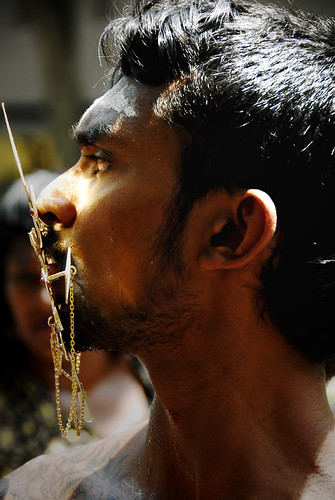
No comments:
Post a Comment